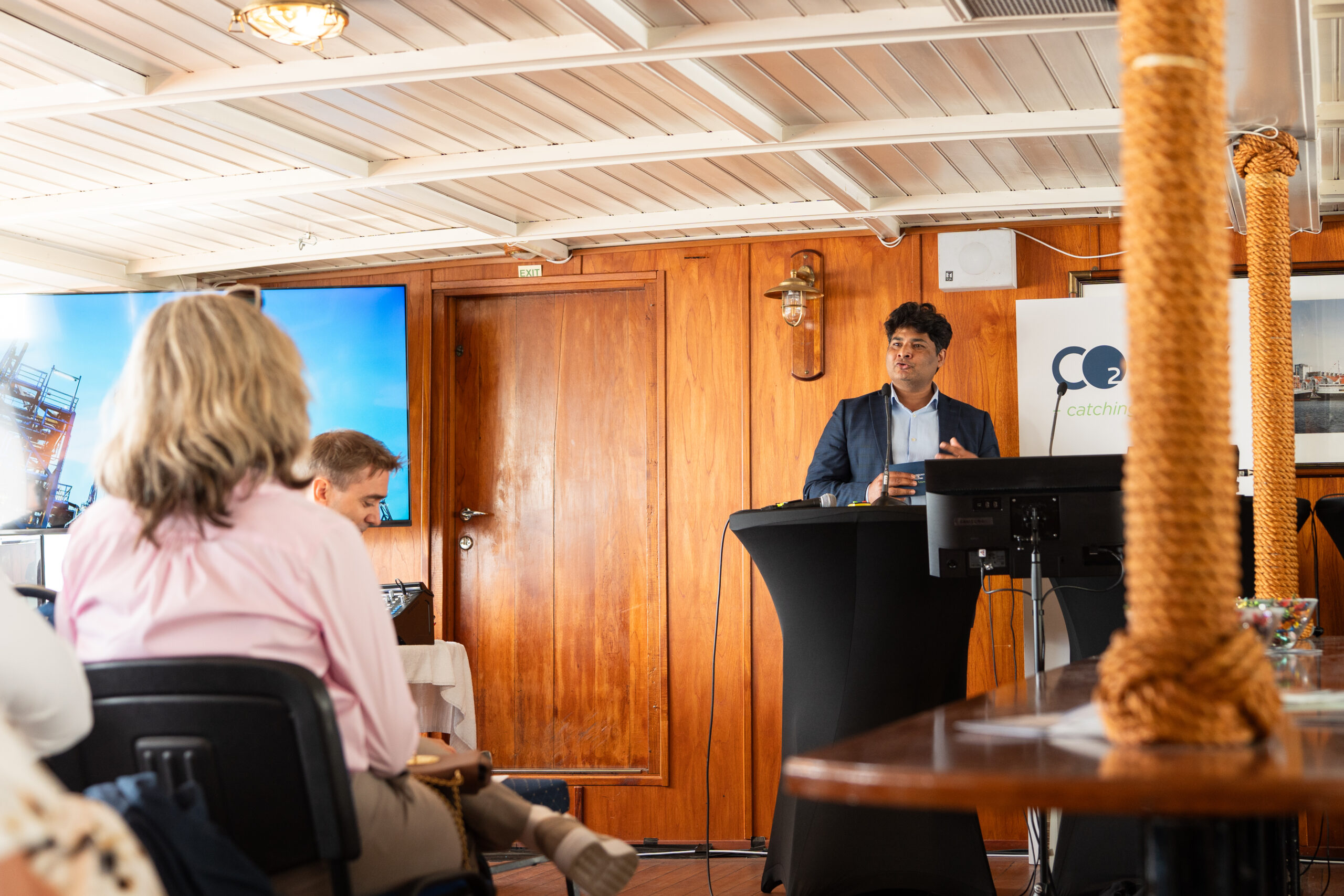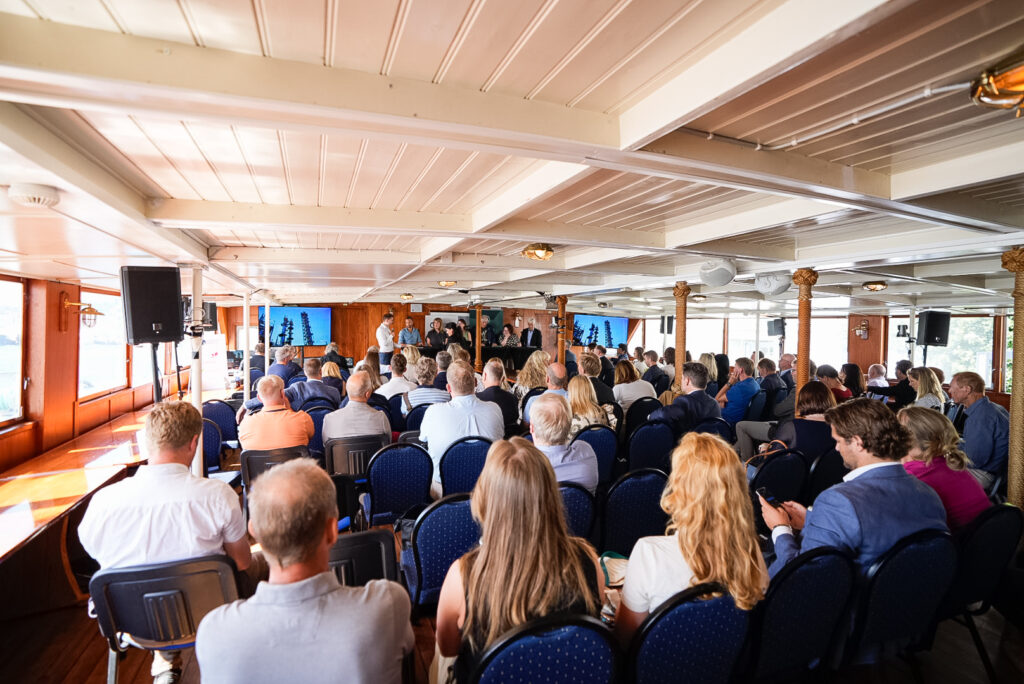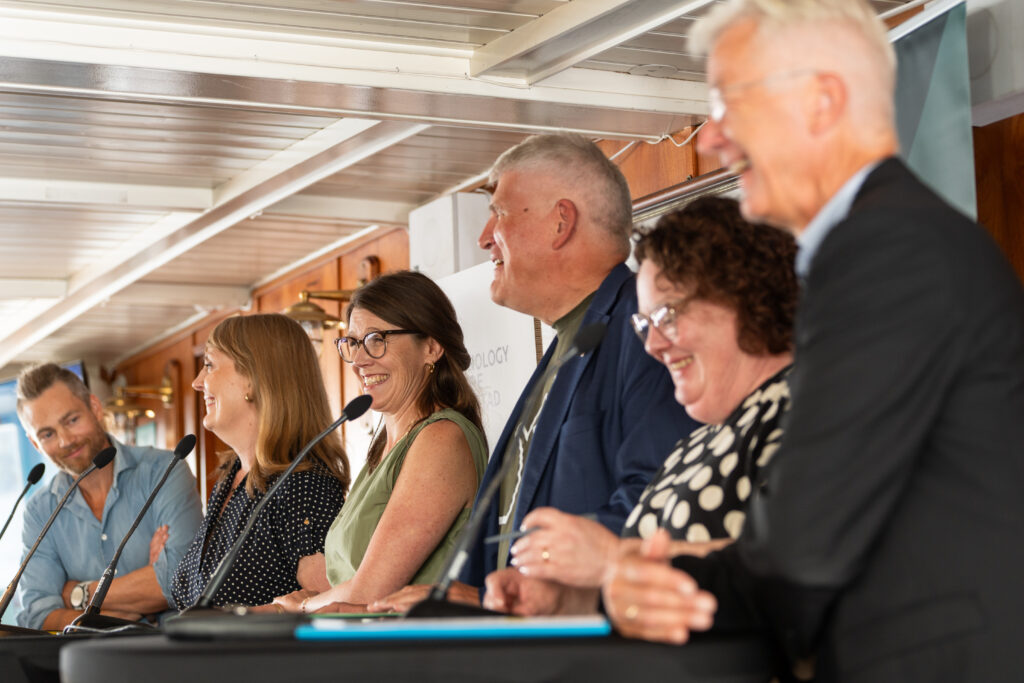
15.08.2025
The Public Sector Must Demand CCS
About 100 participants boarded the “Vestlandsbåten” on 12 August at Arendalsuka, when Technology Centre Mongstad (TCM) and Greenspot Mongstad hosted presentations and debate on the future of CCS.
Arendal: – Almost half of the revenue generated by the Norwegian cement industry comes from public-sector purchasing. Although the government quarter and Bane NOR’s new workshop in Drammen are to be constructed using low-carbon cement, examples like these remain rare. At a recent Arendalsuka debate, speakers emphasised that public procurement must play a much stronger role in requiring products based on CCS.

What will it take for more Norwegian companies to invest in CCS?
Heidelberg Materials, Europe’s largest cement supplier, is also the first to join a complete CCS value chain through the capture facility launched at its Brevik plant in June, as part of Norway’s national Longship CCS initiative.
Pia Prestmo, the company’s Public Affairs Manager, was clear about the public sector’s responsibility:
“Whether it is cement, steel, or fertilizer, the financial viability of low-carbon solutions must be strengthened. Boardrooms are waiting for one signal — that the risk is low enough to justify building a facility in their sector. They need assurance that climate-friendly products will become standard goods.”
Requires Billions in Government Support
“CCS is absolutely necessary to avoid catastrophic global warming,” emphasized Eivind Berstad, head of the CCS team at Bellona. “This is the technology that is hardest to replace, so we are completely dependent on it. But CCS needs an extra push, which is why we are so focused on it.”
Berstad noted that momentum for CCS increased when the focus shifted from power generation to industry. “In Europe, there is now strong momentum to make it happen. Politically, a concrete strategy is being set, funding is being allocated, and oil and gas companies must commit to providing storage capacity.”
He argued that Norway lacks a framework for CCS development. “What is needed is billions in the state budget for carbon capture and storage. Authorities must ask industry about volumes so that infrastructure can be planned, and Norway must participate in the European effort requiring oil companies to provide storage capacity already by 2030.”
More Research and Development Needed
Kristine Karlstad, Vice President Sustainability at Hydro, noted that since 1991, the company has cut emissions by 55% while increasing production at its five Norwegian smelters by 40%. However, she explained that the CO2 content in exhaust gases from aluminium production is low, and effective capture technologies are not yet available.
“We have picked the low-hanging fruit, and now the hardest part remains. We must work with research and development, testing, and prioritization before we can implement CCS at our plants.”

Strong Collaboration Between SINTEF and TCM
SINTEF has been working on CCS solutions since 1986. Its Director of Sustainability, Nils Røkke, highlighted the value of its Trondheim test facility as a partner to TCM for near full-scale trials.
“You could have bought a car in 1900, but cars are undoubtedly better in 2025. The modern car could not exist without that history. Over the decades, we have reduced energy use in carbon capture by 25% and eliminated amine-related emission issues — proof of how strong collaboration between research and innovation has delivered full-scale solutions.”
Looking ahead, Røkke underlined the need for storage capacity, CO2 delivery systems, and transport solutions adapted to the North Sea’s temperature conditions. “In short,” he said, “we need workable specifications that balance risk and cost.”
Reducing Risk and Costs
Since its inception in 2012, TCM has tested 17 different technologies. Managing Director Ismail Shah noted that nearly all full-scale CCS plants built or approved worldwide have used technologies tested at TCM.
“For it to be cheaper for industry to capture CO2 than to release it, we must lower costs. That means advancing research, development, and demonstration in parallel with building more capture facilities. The more we build, the easier it becomes to find solutions that work across industries. Risk reduction must cover technical, environmental, and commercial aspects.”
Continued Government Commitment to TCM
State Secretary Astrid Bergmål from the Ministry of Energy praised TCM’s role: “The work at Mongstad to test, verify, and demonstrate CO2 capture technologies on a large scale is world-class and central to our CCS efforts.”
She emphasized that Longship is not the end of Norway’s CCS ambitions: “The government wants to facilitate the continued growth of the CCS market, where industry finds good commercial solutions. Any new policy instruments must be well-targeted and enable industry-driven solutions. That is what we are working on now.”
Bergmål added that the government is also working to find a solution for more commercial operation of TCM with reduced state support.
